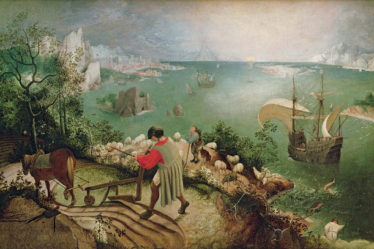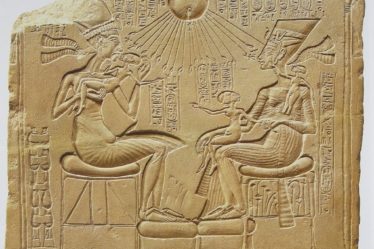Aspendos is always referred to by its theater. The story associated with its construction – how much we do not know correctly – strengthens this perception. But it would be unfair to Aspendos to be limited to the theater.
Aspendos is actually a highly developed city of Pamphilia. It is a city in the series of cities, which are competing with each other and are mainly Termessos, Perge, Sillyon, Side, Selge. Located near Köprüçay – Antique Eurymedon – one of the largest rivers in the region, the city used this river for its daily and agricultural activities as well as a waterway to the Mediterranean Sea. Thus, it was able to be both at a safe distance from the sea and to trade in sea. Sea was very important in the ancient world. The most important advantage was undoubtedly the ease of trade by sea. However, being very close to the sea made the cities especially vulnerable to the sudden attacks of pirates or enemy fleets.
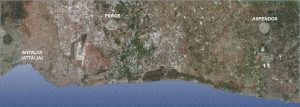
| 3 of the cities of Pamphilia. They couldn’t get into the picture, but there’s Termessos on the left and Side, Sillyon and Selge on the right. |
40 km from Antalya. east and 16 km from the sea. According to the Greek tradition of the ancient city inside, it was rumored that it was founded by the colonists of Argos led by Mopsos in 1,000 BC. Archaeologists have found remains dating back to around 800 BC and the Hittites. But before the Greeks came, there was probably a local, resident population in Aspendos. With the arrival of the Greeks, the settlement must have developed and acquired a city character. From coins we learned that Aspendos was known as “Estwediya larda in the 5th and 4th centuries BC. This naming is associated with King Asitawada mentioned in the Hittite hieroglyphic inscriptions in Karatepe, near Adana (web1).
The most important sources of income of the city in the ancient period are imported salt, olive oil and wool. In addition, horses raised in this city are said to be very famous in ancient times. Before visiting the city, let us tell the story that inspired the title of the article. The king of the city of Aspendos (the spin begins here. What king in the 2nd century AD?) Or his ruler, whatever it is, had a daughter who was a legendary beauty. Naturally, she’s a lot of suitor. To marry the king’s daughter, to choose the most appropriate among the suitors, he said, “Whoever does the most useful work to our city and our people, I will give my daughter to him. Sonra After this challenge, there must have been a lot of suitor, but perhaps the most ambitious or perhaps the finals. Some people claim that these two people are twins.
One of the twins brought drinking water to the city by building canals and aqueducts from distant sources. At that time, the biggest need of cities was undoubtedly clean water. Clean water was of great importance for both drinking and agriculture, but perhaps more importantly for hygiene. One of the most feared at that time was epidemic diseases, especially plague. When you think like this, the importance of aqueducts is immediately understood.
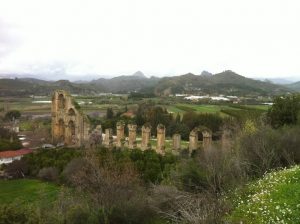
| Second place in the competition, the aqueducts… |
The king, “the man brought water to the city brother, what more can you do, ” he was about to give his daughter to this young man, let’s look at the other brother’s theater for the city so that it is not a shame. The theater built by the architect Zenon is also very impressive. But just as the king decided to give the girl to the architect of the aqueducts, Zenon on the stage as he wandered the area with the top vaults, almost sighing whispering, “Oh, I wish the king would give me his daughter.” Despite the distance, the King clearly heard this sigh and changed his mind, seeing that the theater had a great acoustics. Rather, he decided that the two works were of extraordinary quality and concluded: divide the girl in half and give both architects a half.
Yes, it is a ridiculous proposal as much as possible, but it leads to such a situation; Zenon does not accept this proposal and says that she will accept her opponent’s marriage rather than divide the girl in two. The king, who agreed to marry his opponent rather than the death of his daughter Zenon’un convinced that the daughter really loved and decided to marry him. So in one piece.
Of course there are a lot of questions in this fairy tale. As a historian, I put aside its accuracy and error, eh said, this is a fairy tale. In fact, there are also timbre reminders of 1001 night tales. I feel like we’il find a very similar tale there. Anyway, what’s on my mind, what does the architect who made the aqueduct say? He has no say. I don’t think he said, “Okay, give me the exact half.” And the more difficult question is, “ are you mine or the land of the earth bir shows greater love or sen if you don’t love like love, love me like a brother tır is a greater love?
Difficult question. Of course, no one should kill anyone that separate, in love with someone else at the bottom of your nose to live a happy life with someone else can you consent? Or vice versa, what can you do for the sake of your love? As the answer to this question comes the most supreme things to everyone. Can you do the meanest, mean things? Do you glorify yourself or degrade your evidence, in fact your love? I think there was a sub-theme in the film Ashkiya. Where are we? These are grueling subjects, let’s visit the beautiful Aspendos again. Incidentally, the ancient theater and aqueducts of Aspendos were added to the UNESCO World Heritage Temporary List in 2015. I do not know whether UNESCO took the two works together considering the story of the king’s daughter.
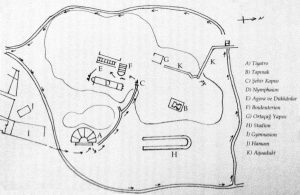
| Aspendos city plan and sightseeing route. (I did not note the source, I will add when I find) |
Today we start to visit the city from the parking lot in front of the magnificent ancient theater. Surely this was not the case in time. We entered the city after passing through the necropolis, the cemeteries, being thoroughly interrogated at one of the gates of the walls, and probably washed in a nearby bath. But today we are far from these experiences. Our trip starts with theater.
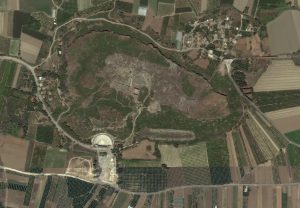
| Aspendos aerial photo. Theater in front, right to the stadium and above the agora. |
Theater
Aspendos theater is one of the biggest theaters in Anatolia. However, as well as the size of the day to remain in good condition increases its impressiveness. Like the Perge theater in the immediate vicinity, this theater seems to withstand the time better than the theaters in the Aegean. I shared my historical and geographical thoughts about the conservation status of the Aegean-Mediterranean cities in another article, I think, in Perge. The reason for this can be summarized as less earthquakes and being built with better technology. Some sources claim that this theater is the best Roman theater out of Italy.

| Images from the theater. From the vaulted paradise on the left to the orchestra, the orchestra and stage in the middle, the cavea on the right, the rows of seats and the auditorium above it. |
Theater of 15.000-20.000 people, the son of Theodoros architect Zenon by MS. It was built around 155 in the reign of Emperor Marcus Aurelius (known as the philosopher emperor). It is understood that the theater was built by two rich brothers from the Greek and Latin inscriptions Curtius Crispinus and Curtius Auspicatus. Of course, I don’t know what will happen to our fairy tale in this case . These passages open to the orchestra area and the stairs lead to the seating areas.
The stage building is quite majestic. If you imagine the stage that reaches to the height of the cavea with its original marble cladding, sculptures and reliefs, you realize that you are facing a great structure.

